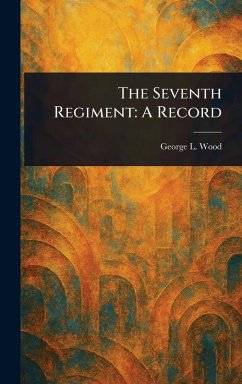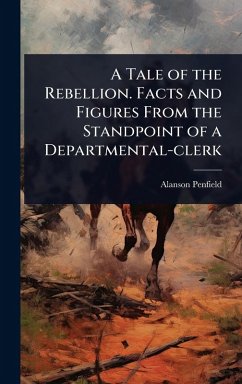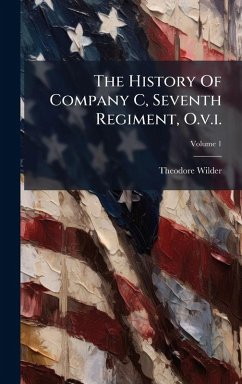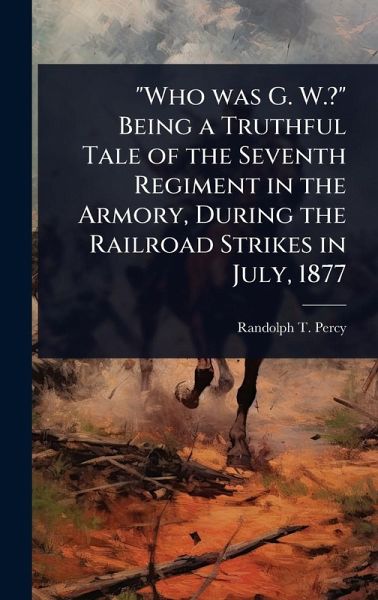
"Who was G. W.?" Being a Truthful Tale of the Seventh Regiment in the Armory, During the Railroad Strikes in July, 1877
Versandkostenfrei!
Versandfertig in über 4 Wochen
29,99 €
inkl. MwSt.
Weitere Ausgaben:

PAYBACK Punkte
15 °P sammeln!
"Who was G. W.?" offers a first-hand account of the Seventh Regiment's involvement during the tumultuous railroad strikes of July 1877. This historical narrative provides a detailed look at the regiment's experiences in the armory amidst widespread labor unrest. Penned by Randolph T. Percy, this account captures the atmosphere of the time, revealing the tensions and challenges faced by the military during this period of significant social upheaval. This narrative provides valuable insights into the intersection of military action and labor conflicts in late 19th-century America. Readers intere...
"Who was G. W.?" offers a first-hand account of the Seventh Regiment's involvement during the tumultuous railroad strikes of July 1877. This historical narrative provides a detailed look at the regiment's experiences in the armory amidst widespread labor unrest. Penned by Randolph T. Percy, this account captures the atmosphere of the time, revealing the tensions and challenges faced by the military during this period of significant social upheaval. This narrative provides valuable insights into the intersection of military action and labor conflicts in late 19th-century America. Readers interested in military history, labor history, or the social dynamics of the post-Civil War era will find this book to be a compelling and informative read. This work has been selected by scholars as being culturally important, and is part of the knowledge base of civilization as we know it. This work was reproduced from the original artifact, and remains as true to the original work as possible. Therefore, you will see the original copyright references, library stamps (as most of these works have been housed in our most important libraries around the world), and other notations in the work. This work is in the public domain in the United States of America, and possibly other nations. Within the United States, you may freely copy and distribute this work, as no entity (individual or corporate) has a copyright on the body of the work. As a reproduction of a historical artifact, this work may contain missing or blurred pages, poor pictures, errant marks, etc. Scholars believe, and we concur, that this work is important enough to be preserved, reproduced, and made generally available to the public. We appreciate your support of the preservation process, and thank you for being an important part of keeping this knowledge alive and relevant.



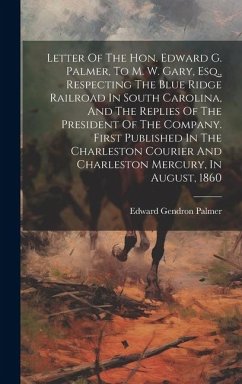

![Remarks of Wilmot G. De Saussure, President, on Offering the Regular Toast of the day, at the Anniversary Meeting [of the State Society of the Cincinnati of South Carolina] 4th July, 1884 Cover Remarks of Wilmot G. De Saussure, President, on Offering the Regular Toast of the day, at the Anniversary Meeting [of the State Society of the Cincinnati of South Carolina] 4th July, 1884](https://bilder.buecher.de/produkte/74/74361/74361801n.jpg)

